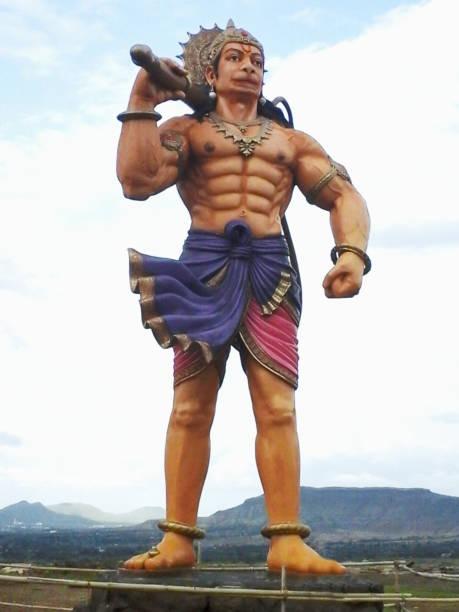Hanuman, the revered deity in Hindu mythology known for his unwavering devotion and extraordinary strength, is often depicted in stunning statues that adorn temples, homes, and public spaces. In this blog post, we embark on a journey to discover the significance and beauty of Hanuman statues, exploring their rich symbolism and cultural importance. Join us as we delve into the world of Hanuman statues, marveling at their craftsmanship and spiritual significance.
The Symbolism of Hanuman Statues
Hanuman statues are not merely decorative pieces; they are powerful symbols of courage, loyalty, and devotion. In Hindu mythology, Hanuman is revered for his selfless service to Lord Rama and his unwavering dedication to righteousness. His statues often depict him in a heroic pose, carrying a mace or holding his hands in prayer. Each element of the statue, from his muscular form to his devout expression, carries profound symbolism, inspiring worshippers to emulate his virtues of strength and devotion.
Hanuman Statues: A visual representation of courage and devotion, Hanuman statues serve as reminders of the power of faith and righteousness.
Types of Hanuman Statues
Hanuman statues come in various forms and sizes, each representing different aspects of the deity’s character and mythology. From intricately carved marble sculptures to simple brass idols, there is a Hanuman statue to suit every taste and budget. Some statues depict Hanuman in his traditional form, while others portray him in more dynamic poses, showcasing his heroic feats and divine attributes. Whether standing tall in a temple courtyard or nestled in a home shrine, Hanuman statues exude a sense of majesty and reverence.
Cultural Significance of Hanuman Statues
In addition to their religious significance, Hanuman statues hold great cultural importance in many communities. In India, Hanuman is venerated as a symbol of strength and protection, and his statues can be found in temples and public spaces across the country. During festivals and religious ceremonies, devotees offer prayers and offerings to Hanuman statues, seeking his blessings for strength, courage, and protection. The presence of Hanuman statues in homes and temples serves as a source of inspiration and comfort, fostering a sense of connection to the divine.
Hanuman Statues Around the World While
Hanuman statues are most commonly associated with Hinduism, they can also be found in other parts of the world where the influence of Hindu culture has spread. In countries such as Nepal, Thailand, and Indonesia, Hanuman is revered as a deity of great significance, and his statues can be seen in temples and sacred sites. In Western countries, Hanuman statues are increasingly gaining popularity as symbols of spirituality and devotion, attracting followers of all backgrounds who are drawn to his message of courage and faith.
Conclusion:
As we conclude our exploration of Hanuman statues, we invite you to reflect on the profound symbolism and cultural significance of these magnificent sculptures. Whether you are a devout worshipper or simply appreciate their aesthetic beauty, Hanuman statues have a universal appeal that transcends borders and beliefs. We’d love to hear your thoughts and experiences with Hanuman statues—share your comments below and join the conversation.






